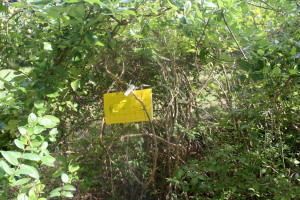Plan to Monitor Insect Pests in Berries During 2013 – Resources & Methods
go.ncsu.edu/readext?203003
en Español / em Português
El inglés es el idioma de control de esta página. En la medida en que haya algún conflicto entre la traducción al inglés y la traducción, el inglés prevalece.
Al hacer clic en el enlace de traducción se activa un servicio de traducción gratuito para convertir la página al español. Al igual que con cualquier traducción por Internet, la conversión no es sensible al contexto y puede que no traduzca el texto en su significado original. NC State Extension no garantiza la exactitud del texto traducido. Por favor, tenga en cuenta que algunas aplicaciones y/o servicios pueden no funcionar como se espera cuando se traducen.
Português
Inglês é o idioma de controle desta página. Na medida que haja algum conflito entre o texto original em Inglês e a tradução, o Inglês prevalece.
Ao clicar no link de tradução, um serviço gratuito de tradução será ativado para converter a página para o Português. Como em qualquer tradução pela internet, a conversão não é sensivel ao contexto e pode não ocorrer a tradução para o significado orginal. O serviço de Extensão da Carolina do Norte (NC State Extension) não garante a exatidão do texto traduzido. Por favor, observe que algumas funções ou serviços podem não funcionar como esperado após a tradução.
English
English is the controlling language of this page. To the extent there is any conflict between the English text and the translation, English controls.
Clicking on the translation link activates a free translation service to convert the page to Spanish. As with any Internet translation, the conversion is not context-sensitive and may not translate the text to its original meaning. NC State Extension does not guarantee the accuracy of the translated text. Please note that some applications and/or services may not function as expected when translated.
Collapse ▲
Blueberry maggot trap baited with ammonium bicarbonate. Photo: HJB 2010
One of the most important pest management practices growers can implement is montoring insect pest populations. This allows management pratices to be targeted when damaging populations are present and also provides a wealth of information about future pest populations.
We’ve posted lots of information about monitoring methods for insects in berry crops, including a series of “do-it-youself” (DIY) posts.
Do-it-yourself insect monitoring:
Spotted wing drosophila monitoring
Spotted wing drosophila monitoring videos
One caveat to our spotted wing drosophila (SWD) trapping recommendations-many new baits and lures are in the process of being developed for SWD. We no longer believe that apple cider vinegar is the most appropriate bait for traps. Instead, we are suggested that interested trappers use a mixture of 4 Tbsp sugar plus 2 Tbsp active yeast dissolved in 32 oz water. Traps should be filled 1 to 2 inches deep with this bait and changed weekly! After one week, yeast baits become unusable.
Distinguishing SWD larvae in strawberries and in blueberries


